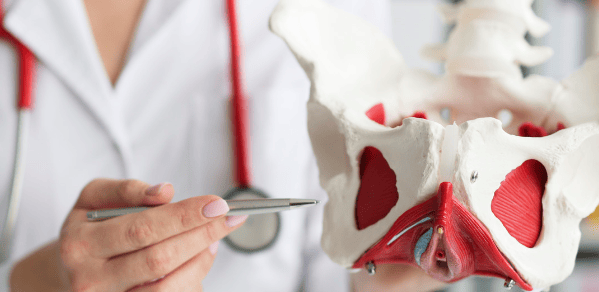Bringing a new life into the world is a profound and transformative experience. The journey through pregnancy and childbirth is filled with joys, challenges, and significant changes, both physically and emotionally. After the birth of your precious baby, it’s essential to prioritize post-natal care to ensure a healthy and comfortable recovery.

In this comprehensive guide, we will explore various aspects of post-natal care, including addressing issues connected to breathing, posture, pelvic floor health, diastasis recti, and low back and SI joint pain. By understanding and addressing these key areas, you can navigate the postpartum period with confidence, ease, and optimal well-being.
Understanding Post-Natal Care
Post-natal care refers to the care and support provided to mothers after childbirth. It encompasses a range of physical and emotional aspects, all geared toward ensuring a smooth and healthy recovery process. This care is essential for new mothers as it helps them regain their strength, manage discomfort, and adjust to the changes that come with motherhood.
Breathing and Its Impact
Proper breathing techniques play a significant role in post-natal care. During pregnancy, the growing baby exerts pressure on the diaphragm and surrounding organs, which can affect breathing patterns. Additionally, the physical stress of childbirth can further impact your breathing.
The Significance of Post-Natal Breathing: Breathing affects not only your lung capacity but also the stability of your core muscles. After childbirth, it’s crucial to reestablish healthy breathing patterns to support your body’s recovery and overall well-being.
Practical Tips and Exercises: To improve post-natal breathing, focus on deep diaphragmatic breathing. Practice inhaling deeply through your nose and exhaling slowly through your mouth. Gentle breathing exercises can help retrain your diaphragm and improve lung capacity.
The Importance of Posture
Posture issues are common among new mothers due to the physical strain of pregnancy and childbirth. Poor posture can exacerbate discomfort and hinder your recovery process.
Common Posture Issues:
- Rounded shoulders
- Forward head posture
- Swayback
- Pelvic tilt
The Link Between Posture and Comfort: Maintaining good posture is essential for reducing strain on your muscles and joints. Proper alignment can also alleviate discomfort, such as back pain and muscle tension.
Guidance on Posture Maintenance:
- Be mindful of your posture throughout the day, especially when feeding or carrying your baby.
- Engage in gentle stretching and strengthening exercises to improve posture and reduce tension.
Pelvic Floor Health
The pelvic floor is a group of muscles that support your pelvic organs. During pregnancy and childbirth, these muscles undergo significant changes, and proper care is vital to ensure their health and functionality.
The Importance of Pelvic Floor Health:
- Pelvic floor health is essential for bladder and bowel control.
- These muscles play a role in sexual function and overall comfort.
Exercises and Strategies:
- Pelvic floor exercises, such as Kegels, can help strengthen these muscles.
- Seek guidance from a pelvic floor specialist to address any specific concerns or issues.

Managing Diastasis Recti
Diastasis recti is a condition in which the abdominal muscles separate during pregnancy. This separation can lead to a bulge or gap in the abdominal area, which may persist postpartum.
Understanding Diastasis Recti:
- Diastasis recti occurs when the connective tissue (linea alba) that holds the abdominal muscles together stretches and weakens.
- It can result in core weakness and back pain.
Managing and Healing Diastasis Recti:
- Consult a healthcare professional or post-natal coach for an accurate diagnosis.
- Gentle core-strengthening exercises and specific diastasis recti rehabilitation programs can help heal and reduce the gap.
Alleviating Low Back and SI Joint Pain
Low back pain and sacroiliac (SI) joint pain are common complaints among new mothers. The physical changes that occur during pregnancy and childbirth can lead to discomfort in these areas.
Common Causes of Low Back and SI Joint Pain:
- Pregnancy hormones that relax ligaments, causing instability
- Postural changes due to the shift in the center of gravity during pregnancy
Relieving Discomfort:
- Incorporate gentle exercises that focus on strengthening the muscles supporting the low back and SI joints.
- Consult a healthcare provider or physical therapist for targeted relief and treatment options.
Conclusion
The post-natal period is a time of both joy and adjustment. Prioritizing post-natal care that includes addressing issues related to breathing, posture, pelvic floor health, diastasis recti, and low back and SI joint pain can significantly contribute to a healthy and comfortable recovery. Remember that every mother’s journey is unique, and seeking professional guidance and support tailored to your needs is essential.
As you embark on this transformative phase of motherhood, empower yourself with knowledge and proactive care. By taking steps to address these post-natal concerns, you can enhance your well-being, regain your strength, and embrace the joys of motherhood with confidence and vitality. Your health and comfort matter, and post-natal care is the key to a brighter and healthier future for both you and your precious baby.

